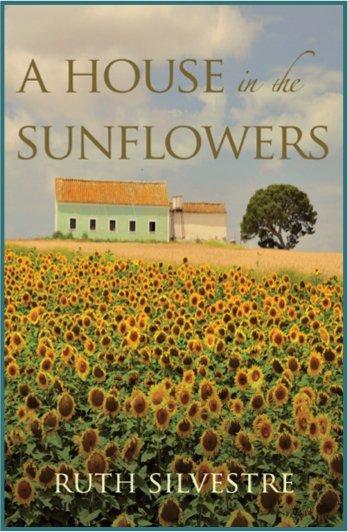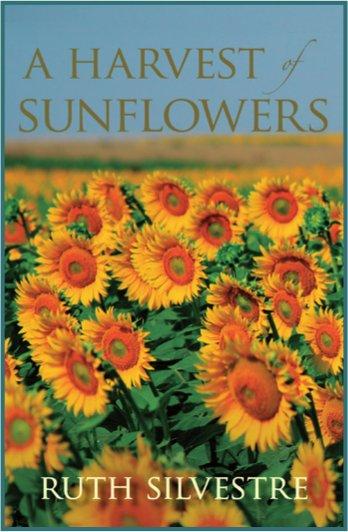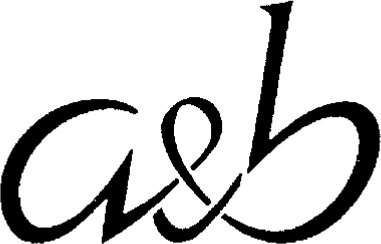Reflections of Sunflowers (18 page)
Read Reflections of Sunflowers Online
Authors: Ruth Silvestre

On Saturday we invited Raymond and Claudette and Jean to eat at the new restaurant Le Chabrol, at St Aubin. In our region, no wine is drunk before the soup and to
faire chabrol
, is to pour the first wine into the still warm soup bowl, wiped clean with bread, and drink it from there. A new restaurant only ten minutes away! We were eager to try it. There had been talk of one opening in our village but it had come to nought. Even the shop was still trying to find someone to take it on. Raymond had assured us that the food at this new venue was good.
‘Oui, la cuisine est bonne,
’ he confirmed. ‘
Mais
…’ he pulled a face. He had eaten there with a reunion of the
Crédit Agricole
, he explained, and the service had been so slow that the meal had taken well over three hours, but this was probably an exception. We arrived, however, just in time to see a convoy of cars disgorging a local
Club de Pétanque.
‘Merde,’
said Raymond. ‘We’d better get our orders in first.’
The restaurant was already almost full. The
pétanque
players, some thirty of them by now, were
to be accommodated in a further room at a slightly lower level. We ordered aperitifs and got down to the menu with unusual speed. There were three to choose from. The first at 13 Euros, about £8.50, was a choice between soup or salad, followed by beef with shallots and three vegetables, or
navarin
of lamb. To finish there was a cheese and walnut salad,
crème brulee
or two
boules
of ice cream.
The most expensive menu at exactly double the price, offered, as a starter,
Marmite de la mer en croûte,
or
salade gourmande
with
foie gras, magret de canard fumé
and asparagus. This was followed either by crown of lamb with rosemary, duck breast cut into a fan shape, or an
entrecôte façon Rossini
, all served with
tomates provençales, frites maison
, and
endives braisées
. The dessert was a choice between a small goat’s cheese warmed with honey, strawberry tart or ice cream.
We all decided that the middle menu at 18 Euros looked good and settled down to choose between three starters consisting of a salad with goats cheese,
semi-cooked
foie gras,
or
sandre,
a river fish, with tiny vegetables in a puff pastry case. The main course was either
confit de canard,
or an entrecôte served with a Roquefort sauce, shallots, or sea salt.
The first course was quickly served and delicious. I had the fish and it was sufficiently generous a portion to make the predicted long wait for my steak bearable.
We watched the family of twelve at the next table while Raymond, pronouncing his
foie gras
very good, gave a
sotto voce
running commentary. He explained who was married to whom. The family ranged from a baby asleep in the pram and a peripatetic toddler, to the great uncle of 93. A retired priest, according to Raymond, he sat at the head of the table, his beret still on his head and clearly enjoyed his food. From time to time his eyes closed for about ten minutes. The family appeared not to notice. An occasional round of cheering from the
pétanque
players in the other room would wake him, after which he would brighten up again and take charge of the conversation.
While we waited, Raymond told us about being waylaid in Monflanquin the previous week by a reporter for a local television station who was researching the mysterious goings on of the family at the nearby Chateau of Martel. I was interested as it was Mme Marchand, the daughter of the family who, with her husband Jean, had been responsible for the past seventeen years for the wonderful music festival in Monflanquin. The sudden demise of this popular event two years previously had shocked and disappointed everyone and, apart from rumours, no one really knew the reason.
‘C’était quelque chose bizarre, une grande famille comme ça’
said Raymond shaking his head. ‘I told the fellow I didn’t want to discuss it.’
According to an article in the local paper, it seemed that Mme Marchand had been completely taken in by a confidence trickster in Paris, Raymond continued. Having estranged her from her husband he had slowly taken over the finances of the entire family. ‘I’ll show you the report,’ said Raymond.
‘C’était vraiment
incroyable,
’ he said mournfully. He cheered up when his steak arrived, barely cooked, as he likes it. He told me that the restaurant, now completely full and buzzing, the
pétanque
players especially animated, used to be the
boulangerie
when he was a boy. It was here he came during the war to get the bread.
‘They had no bread in Paris,’ he said, ‘but here there was always a bit of wheat somewhere.’ He smiled, tapping his nose. ‘You know,
sous la table.
’ He was looking forward to an outing the following morning with
le Club des Vieilles Voitures
but the weather forecast was not good.
Sunday dawned very damp and grey and there were frequent electricity cuts. After lunch it brightened and the rest of my family set off on an expedition to the medieval Château of Bonaguil. Claudette, pleased that she had not accompanied Raymond – it had actually been raining when he left – came to visit me bringing the newspaper article. Written after an interview with M. Marchand and his son-in-law, the story was indeed bizarre. Apparently, a few days after the end of the last music festival, M. Marchand had been confronted by
his wife and her two brothers – one of whom was a doctor in Bordeaux – and had been accused of having 45 mistresses. Jean Marchand is a slightly built, very calm and quiet man. I would never have imagined him able to cope with two or three mistresses, let alone 45. He was given half an hour to pack and was put on a train for Paris, since when, all communication with his wife and family had ceased. Next his newly married daughter suddenly left her husband, selling all her shares and returning to the Château. The mystery man, named only as M. Thierry T., had apparently gained complete domination over Mme Marchand, claiming to be working, it was said, for the Secret Service, and protecting the family against Freemasons. M. Thierry T., however, was already associated with fraud and with several organisations which had ended up in liquidation.
‘But how did she get so taken in?’ I asked. Mme Marchand had always seemed to me intelligent and businesslike.
Claudette shrugged.
‘C’était vraiment impensable,’
she said. The story continued with the doctor closing his practice in Bordeaux, and returning to the Château. His wife, who, apparently, hated country life, stopped phoning her friends and sold her smart apartment near Arcachon, which she adored. When her nephew asked the
notaire
, to whom the cheque from the sale was made out, it was to M. Thierry T. A reporter had at
one time been courteously received at the Château by one of the younger grandchildren who had sadly but firmly declared it to be a private affair. More recently the bailiffs had been sent in and the furniture removed, no taxes having been paid for several years. Now, the Château was empty.
‘But where are they living?’ I asked. Claudette did not know. ‘Everyone is baffled,’ she said. It seemed such a sad end for a family. I remembered especially the grandmother who, although 91 and lame, had always welcomed everyone so graciously to the lovely garden of the Château on those magical summer evenings of such wonderful music.
After Claudette had gone I sat alone for the first time. It was very peaceful in the early evening sunlight. I had been right to come and knew now that I would return in the summer. I thought of all the joy that Bel-Air has embraced within its thick walls but also all the sorrow. Anaïs’s father-in-law, Pierre, born in 1839, was married at 27, and a widower at 40, with three little boys to care for. Anaïs herself was just 48 when her husband Justin died of a heart attack and she had only her handicapped son to help her make a frugal living from the land. She lived to be 92 and
vaillante
, valiant, is the word those who knew her use to describe her.
She sets a good example.
She kept her school reading books and marked the passages which she clearly reread, especially in her small and worn copy of
La petite Jeanne,
which gives advice on everything from crops to hygiene to widowhood. I had recently been rereading another of her books,
Le Tour de France par deux Enfants,
which is the cleverest geography book. I got it down again from the shelf. This exciting tale of two orphans, escaping from occupied France after the annexing of Alsace-Lorraine and journeying the length of the country to find their uncle must have enthralled generations of pupils. There are 212 engravings showing every region of France and what went on there in 1884 when this, the 128th edition, was printed. Anaïs’s copy being somewhat tattered, Simone bought me the latest edition, number 8566
mille,
and there is an updated Prologue of 1904 telling proudly of the wonderful inventions of X-ray, chloroform, submarines, photography, the telephone, the first Metro. It is, of course, full of moral precepts. They fall oddly on the modern ear. But this little, old fashioned book, full of national pride, is strangely moving.
‘Si, partout en France, même dans le moindre coin, chacun veut remplir son devoir, la patrie deviendra grande, heureuse, prospère. Que les plus courageux donnent l’exemple, les autres suivront. L’exemple est contagieux, tâchons qu’il soit toujours bon.’
‘If, in the whole of France, even in the smallest corner, everyone will fulfil their duties, our country will become great, happy and prosperous. When the most courageous set the example, others will follow. An example is contagious, take care that the one you set is good.’
No one reads moral tales now, but I am told that
citoyenneté
is now on the agenda once more in French schools and must be somehow included in every lesson. Once a year, at the end of September, Monflanquin celebrates
La soirée du Patrimoine
. The crowd, mostly local, winds up the narrow medieval streets, which are lit with small candles on ledges. Costumed figures from literature and the history of the town recite from balconied windows. Children gaze in wonder as they listen to poems by Ronsard, tales of the Black Prince, and of the Huguenots. They hear of the founding of the town and the rights and responsibilities set down in the original charter in 1256. There is a real sense of history here. Bel-Air is not visible from Monflanquin, but the curiously shaped hill under which it nestles is clear. Orchards and vineyards, woods and hedges can all disappear but this gentle landscape remains.
From my porch I can see up to the wood, where each day the trees grow greener against the dark conifers. The vines, like rows of withered arms against the stakes, give no hint as yet of the luxury of foliage
and fruit to come. There is a blaze of kerria against the barn wall and the fig is just beginning to leaf, the tiny first crop already showing beneath the buds. This morning the cuckoo was calling. Every summer we escaped the city and came here. We enjoyed our friends, those who live here and those who came to spend time with us. At Bel-Air, somehow, everything was renewed; our health and strength, our peace of mind, our sense of what was important, and our love. The house was, is, a special place. I shall come as often and for as long as I am able. The next generation, and the one after that will, I hope and trust, continue to find here, as Mike and I have done, something of lasting value in their busy lives.
Thanks to Tony and Nan White
OUSE IN THE
S
UNFLOWERS
BY
R
UTH
S
ILVESTRE

This is the story of a dream come true. In 1976, in the Lot-et-Garonne region of south-west France, Ruth Silvestre and her family found Bel-Air de Grèzelongue, a house that had been left, deserted and uninhabited, for ten years. They fell in love with it.
A House in the Sunflowers
tells of their affair with the house, from the search and initial frustrations, their euphoria when they finally bought it and the challenges of renovation and gradual assimilation into the local community. It provides rare glimpses of French family life in the region that is considered the gastronomic centre of France, complete with mouth-watering descriptions of meals in the sun and fascinating insights into the history and customs of this area.
ARVEST OF
S
UNFLOWERS
BY
R
UTH
S
ILVESTRE

Twenty years after first setting eyes on Bel-Air de Grèzelongue, her dream house in the sunflowers in south-west France, Ruth Silvestre brings us the
long-awaited
sequel to the adventures.
Local friendships and bonds of loyalty that she and her family formed during the gradual restoration of their once derelict farmhouse have now deepened. The children, both hers and her neighbours, are now adults. Wedding festivities and banquets are described in mouth-watering detail as, with natural
joie-de-vivre,
a close-knit society celebrates and prepares for the coming generation.
A Harvest of Sunflowers
is a joy to read from a writer who can illustrate the simplest experience with exuberance and affection. Both moving and highly amusing, this book will hold the reader.
We hope you enjoyed this book.
Do you want to know about our other great reads,
download free extracts and enter competitions?
If so, visit our website
www.allisonandbusby.com
.
Click to sign up to our monthly newsletter
for exclusive content
and offers, news of our brand new releases, upcoming events
with your favourite authors and much more.
And why not click to follow us on
Facebook
and
Twitter
?
We’d love to hear from you!
